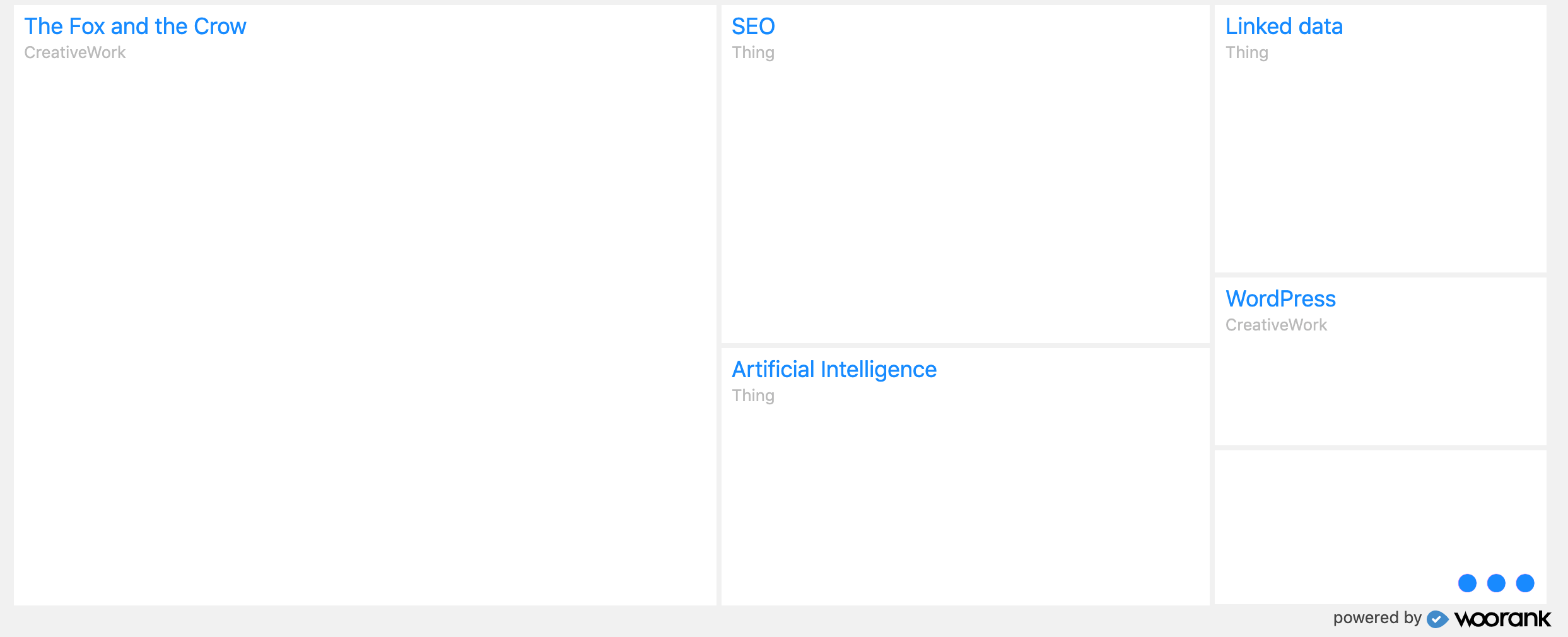Get to know your content and turn insight into action
The more you know about content, the easier it is to reach your readers by capturing search engines traffic. We’re happy to introduce a new dashboard to help you understand your content and to improve your editorial plan.
WordLift’s knowledge graph is the semantic representation of the content on your website. Every article and every page is annotated with one or more entities. These entities are accessible on the front-end as web pages (topical hubs) or are simply used by WordLift to add structured data markup depending on the way the plugin is configured.

Your new Dashboard will help you quickly take action on insights about your content, including:
- Most relevant entities. Find out which concepts are more prominent on your site (prominent = highest number of annotated posts), so you know if this is what you’re aiming for.
- More connected entities. Spot entities that are mostly connected with other entities; these are concepts that help you build the context for your readers (they explain the things you talk about). You might want to create more articles around it when you have an entity that has lots of links to other entities and fewer articles.
- Target articles to enrich that have not yet been WordLifted (one single click to Enrich) or focus your attention on improving your entities (with just one click on Boost). These links take you to the list of articles and the list entities that you can improve. Jump right on it and check it out yourself.
What are you waiting for? Let WordLift analyze your content for you. Download our plugin and unleash the power of semantic technologies.
Take full control of your search rankings
Find out the content that really ranks on Google
After many meetings, an endless number of sketches commits on git and tons of love, we are really happy to bring a brand new search ranking tool to our Editorial and Business subscribers, developed in partnership with Woorank.
Connecting with your audience isn’t just about ranking high on Google with a single keyword. When we write, in order to be relevant for our audience and following the introduction of Hummingbird, we need to focus on topical hubs.
To truly optimize your site for Google’s new semantic understanding of the user queries we have to think in terms of entities and not just keywords.
Moreover, we have to consider:
- the connections between entities and
- how these relationships help us build the context for the content that we are producing
To help you make this switch from keywords to entities we have created a tool that helps you track your rankings using the entities in the vocabulary of your website.
Here is how it works:

You get to choose the keywords that matter the most for your business (or the top 200 keywords the site ranks for) and WordLift will track the rankings on a daily basis across the entire site.

Under Search Rankings, you will find the entities that are driving the organic traffic on your website (the larger the tile and the more the concept is standing out on Google).
This data helps you immediately see if you are connecting with the right audience. Instead of scanning hundreds (or even thousands) of combinations of keywords and pages, in one single treemap, you can see what entities matter the most. Behind each concept, you might have one single page (i.e. the page for that entity) or hundreds of pages that you have annotated with that entity.
Here are just a few of the ways that you can use to turn this data into action:
- Click on one entity and you will see the list of pages behind it and, in the table below, the different types of keywords that this topic is intercepting. Go ahead and build new pages for this topic or improve the already existing content to match what users are searching for.

- Is the entity relevant at all? If it is, how many pages, do you have on this topic? Would it better to expand this cluster by writing more about it? Then go ahead and start creating fresh new content for it.
- Click on the three dots in the right bottom corner and keep on exploring all the other concepts that are driving organic traffic to your site. The more you dig the more you will explore what you are relevant for in the eyes of Google and your readers (higher levels in the treemap correspond to higher traffic volumes).
To calculate the size of each tile, WordLift is using an algorithm that we created similar to Google’s Pagerank to assess how much an entity is relevant in terms of search rankings on your site.
WordLift takes into account, with its Entityrank, how many pages have been annotated with that entity, how many other entities have been used to classify these pages, the search traffic the entity page is getting and the search traffic each keyword is bringing to the cluster of all the annotated pages.
This data is a real treasure box to help you boost the ROI of your content. Is the content you are writing the same content that people find on Google? What are the entities with a higher return for your site (i.e. “Artificial Intelligence” for us as well as “SEO” are responsible for the activation of the new trials)?
This and many other questions that you might have on your organic reach have an immediate answer with this widget. It’s time to find out — and to gain new insights in just a few clicks.
Read more about Semantic Analytics and how to use entities to gain more insights from you Google Analytics.